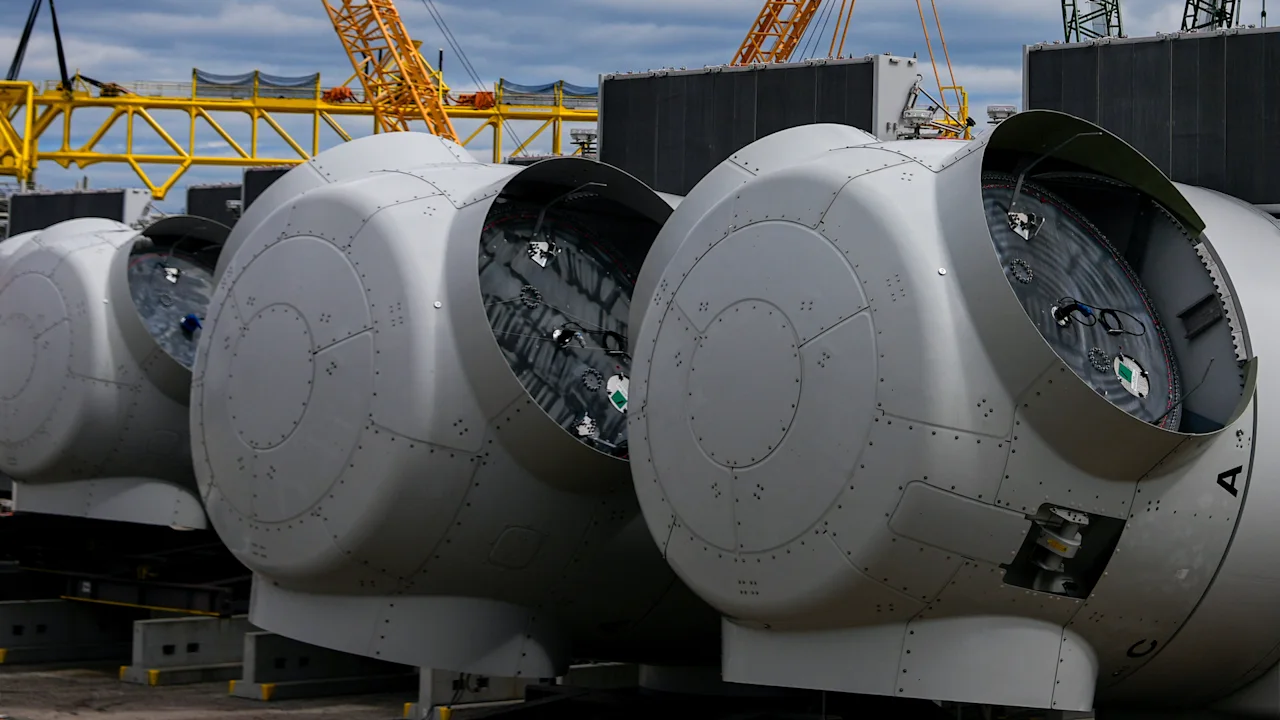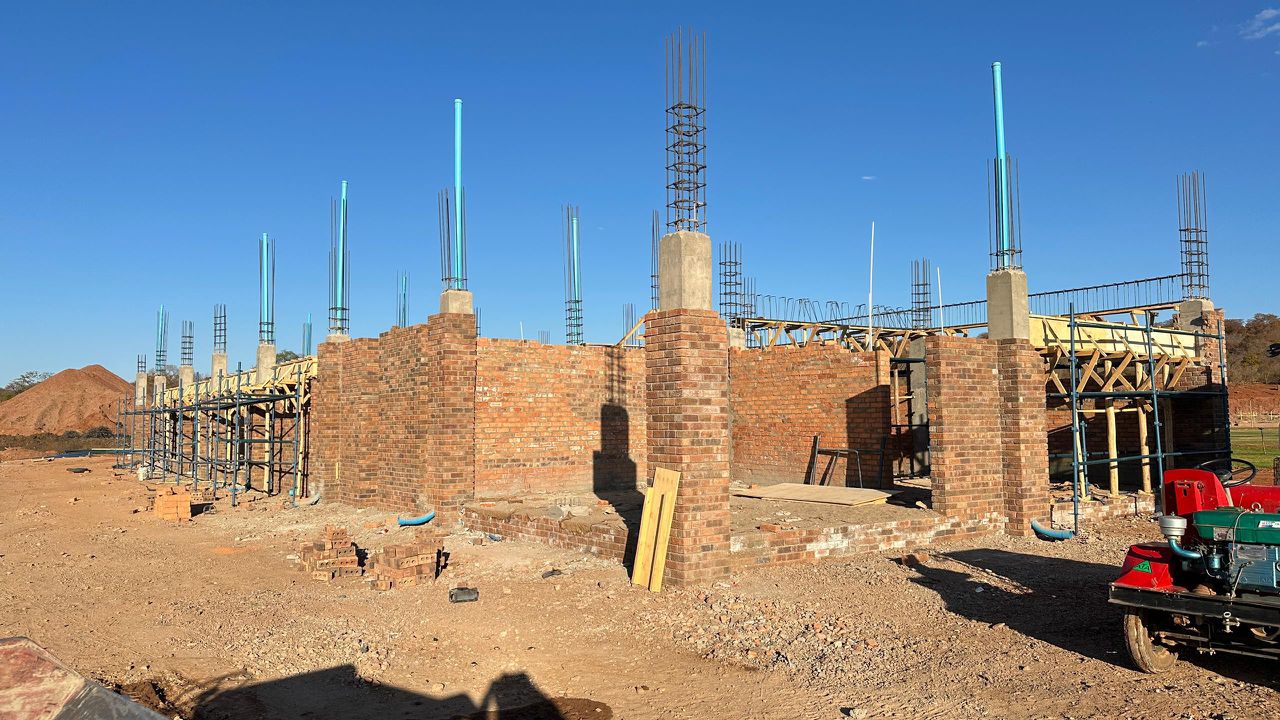Democrats urge Trump to resume a nearly built offshore wind project

A nearly complete wind farm off the coast of Rhode Island and Connecticut faces an uncertain future as the states’ Democratic governors, members of Congress, and union workers are calling Monday for the Trump administration to let construction resume.
The administration halted construction on the Revolution Wind project last week, saying the federal government needs to review the project and address national security concerns. It did not specify what those concerns are. The Bureau of Ocean Energy Management said Monday it’s not commenting further at this time.
The Democratic politicians are getting involved because stopping work on Revolution Wind threatens local jobs and their states’ climate goals, and could drive up electricity prices throughout the region. Officials say the project is 80% complete, with all the underwater foundations and 45 out of 65 turbines already installed.
Large, ocean-based wind farms are the linchpin of government plans to shift to renewable energy, particularly in East Coast states with large populations and limited land for wind turbines or solar arrays.
President Donald Trump has made sweeping strides to prioritize fossil fuels and hinder renewable energy projects. Those include reviewing wind and solar energy permits, canceling plans to use large areas of federal waters for new offshore wind development and stopping work on another offshore wind project under construction for New York, although construction was later allowed to resume.
Rhode Island Governor Dan McKee is headed to North Kingstown, where the logistics and operations hub for the project is located. The governor has said the wind farm is critical to the region’s economy and energy future. Connecticut Governor Ned Lamont spoke at State Pier in New London, where components for the Revolution Wind project are kept before being taken out to sea.
U.S. Senator Richard Blumenthal of Connecticut said during Monday’s press conference that it was “nuts, crazy, insane” to halt a fully approved project that would save ratepayers hundreds of millions of dollars. He expects the courts to agree that the Trump administration acted unlawfully when it stopped the project based on “secret information.”
Revolution Wind is expected to be Rhode Island and Connecticut’s first large offshore wind farm, capable of powering more than 350,000 homes. Power would be provided at a rate of 9.8 cents per kilowatt hour, locked in for 20 years. That is cheaper than the average cost of electricity in New England.
About 1,000 union members have been working on Revolution Wind, and those jobs are now at risk.
“This isn’t work that anybody can do,” Keith Brothers, business manager of the Connecticut Laborers’ District Council, said about the specialized skills the workers on this project have. “We’ve taken people from the military, we’ve placed them on jobs on this specific site, that’s important.”
A statement from North America’s Building Trades Unions was more direct: “President Donald Trump just fired 1,000 of our members.”
The developer, Danish energy company Orsted, is evaluating the financial impact of stopping construction and considering legal proceedings.
The project site is more than 15 miles (24 kilometers) south of the Rhode Island coast, 32 miles (51 kilometers) southeast of the Connecticut coast and 12 miles (19 kilometers) southwest of Martha’s Vineyard. Rhode Island is already home to one offshore wind farm in state waters, the five-turbine Block Island Wind Farm.
The Trump administration previously stopped work on Empire Wind, the New York offshore wind project. Interior Secretary Doug Burgum said it appeared former President Joe Biden’s administration had “rushed through” the approvals, although the developer Equinor spent seven years obtaining permits. Construction was allowed to resume in May after two of the state’s Democratic leaders, U.S. Senator Chuck Schumer and Governor Kathy Hochul, intervened.
—Jennifer McDermott, Associated Press
Associated Press writer Isabella O’Malley contributed to this report.
The Associated Press’ climate and environmental coverage receives financial support from multiple private foundations. AP is solely responsible for all content. Find AP’s standards for working with philanthropies, a list of supporters and funded coverage areas at AP.org.
What's Your Reaction?
 Like
0
Like
0
 Dislike
0
Dislike
0
 Love
0
Love
0
 Funny
0
Funny
0
 Angry
0
Angry
0
 Sad
0
Sad
0
 Wow
0
Wow
0









.jpg)






.jpeg?width=1200&auto=webp&trim=832,0,1184,0#)















































































